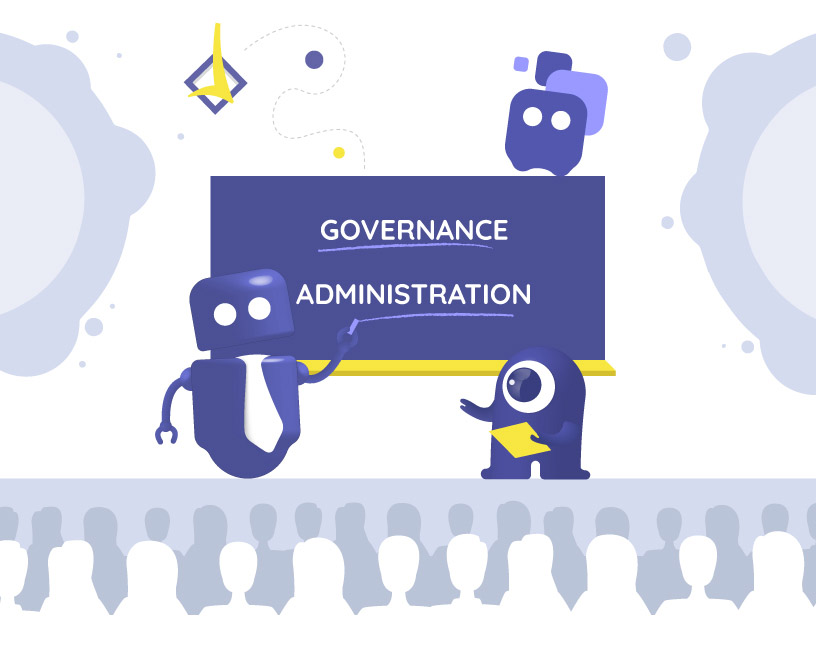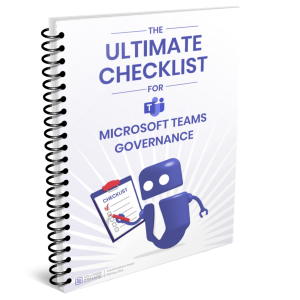Teams Governance: Getting started
Why does Microsoft Teams governance fail after rollout?
Many organizations start with a quick Teams rollout. Within months, IT admins notice problems:
- Too many unstructured teams.
- Files scattered without clear ownership.
- External guests who remain active indefinitely.
- Security and compliance risks rising.
Without a governance framework, Teams turns into digital sprawl. Employees get frustrated, IT loses control, and audits become a nightmare.
Which elements define effective Teams governance?
A strong governance strategy covers several areas:
| Governance Element | Typical Challenges | Goal |
|---|---|---|
| Access Control | Unclear who can create teams, roles not defined | Assign roles, restrict creation rights |
| Data Governance | Sensitive data stored without structure | Define where and how data is stored |
| Compliance | Lack of evidence for audits | Policies, sensitivity labels, monitoring |
| Device Management | Teams Rooms & devices unmanaged | Keep devices updated and controlled |
| External Access | Guests invited without checks | Review, approve, and track guest access |
| Auditing & Reporting | No overview of inactive teams or usage | Reports for transparency |
| Change Management | New features confuse users | Controlled rollouts, documentation |
| Training & Adoption | Users don’t follow rules | Awareness campaigns, guidance |
What challenges do organizations face per element?
- Access Control: Too many users can create teams → duplicates and chaos.
- External Access: Guests stay in the system long after projects end.
- Compliance: Sensitive data is stored in unmonitored channels.
- Auditing: IT cannot answer basic audit questions like “Who has access to this data?”
Each of these issues slows down productivity and increases risk.
How can you implement Teams governance? (Step-by-step plan)
📋 Checklist: 7 steps to establish Teams governance
- Define who can create teams and under what conditions.
- Set naming conventions for teams and channels.
- Use templates for recurring structures (projects, departments).
- Establish lifecycle policies for inactive teams.
- Control and review guest access.
- Define compliance rules with classifications and sensitivity labels.
- Provide training and documentation for end users.
Where Microsoft governance stops – and how Teams Manager adds value
Microsoft offers the basics: roles, expiration policies, templates, and sensitivity labels. But automation is limited. This is where Teams Manager extends governance:
- Request & approval workflows: Users request new teams, IT or managers approve.
- Team templates & metadata: Predefined structures with metadata fields.
- Lifecycle management: Automatic archiving or deletion of inactive teams.
- Naming conventions: Applied automatically to Teams, OneNote, Planner.
- External access control: Manage and review guest access efficiently.
- Governance dashboard: Reports on inactive teams, ownership, external access.
With Teams Manager, governance rules are not just defined – they are enforced automatically. Read what other organizations say about us.
FAQs about Microsoft Teams governance
Immediately. The longer you wait, the more cleanup will be required.
No. Microsoft provides essential features, but automation, structured workflows, and detailed reporting require additional tools.
Naming conventions and lifecycle management usually show results quickly – fewer duplicates, easier search, less admin workload.
Conclusion: From chaos to control
Microsoft Teams governance is not optional – it is the foundation for secure, efficient collaboration. Without it, you risk data leaks, compliance gaps, and user frustration.
By combining Microsoft’s built-in features with Teams Manager, organizations save time, enforce governance automatically, and keep Teams under control.
👉 Ready to build a clear governance strategy?
Book your free Teams Manager demo today and discover how to automate Teams governance.

CEO and Governance Expert at Solutions2Share
Christian Groß is a Microsoft Teams governance expert from the very beginning. Over the past 6 years, he has developed 6 Teams apps, founded Solutions2Share, and launched the German-speaking Microsoft 365 conference in Mainz, Germany.
He regularly speaks at international M365 events and supports IT leaders in building scalable governance strategies.






